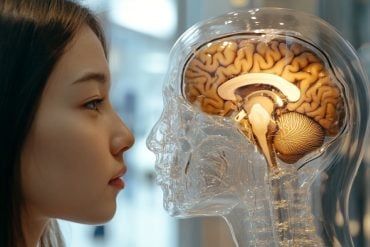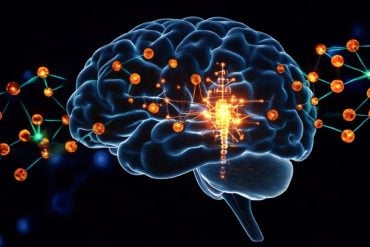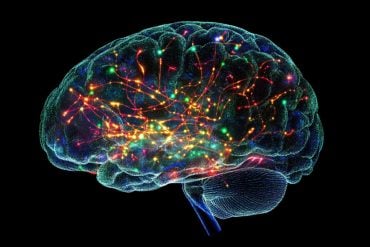Summary: Salk researchers have discovered a possible neuroprotective and anti-inflammatory compound in the Californian shrub, Yerba santa, that may help in the treatment of Alzheimer’s disease.
Source: Salk Institute.
The medicinal powers of aspirin, digitalis, and the anti-malarial artemisinin all come from plants. A Salk Institute discovery of a potent neuroprotective and anti-inflammatory chemical in a native California shrub may lead to a treatment for Alzheimer’s disease based on a compound found in nature. The research appears in the February 2019 issue of the journal Redox Biology.
“Alzheimer’s disease is a leading cause of death in the United States,” says Senior Staff Scientist Pamela Maher, a member of Salk’s Cellular Neurobiology Laboratory, run by Professor David Schubert. “And because age is a major risk factor, researchers are looking at ways to counter aging’s effects on the brain. Our identification of sterubin as a potent neuroprotective component of a native California plant called Yerba santa (Eriodictyon californicum) is a promising step in that direction.”
Native California tribes, which dubbed the plant “holy herb” in Spanish, have long used Yerba santa for its medicinal properties. Devotees brew its leaves to treat respiratory ailments, fever and headaches; and mash it into a poultice for wounds, sore muscles and rheumatism.
To identify natural compounds that might reverse neurological disease symptoms, Maher applied a screening technique used in drug discovery to a commercial library of 400 plant extracts with known pharmacological properties. The lab had previously used this approach to identify other chemicals (called flavonoids) from plants that have anti-inflammatory and neuroprotective properties.

Through the screen, the lab identified a molecule called sterubin as Yerba santa’s most active component. The researchers tested sterubin and other plant extracts for their impact on energy depletion in mouse nerve cells, as well as other age-associated neurotoxicity and survival pathways directly related to the reduced energy metabolism, accumulation of misfolded, aggregated proteins and inflammation seen in Alzheimer’s. Sterubin had a potent anti-inflammatory impact on brain cells known as microglia. It was also an effective iron remover–potentially beneficial because iron can contribute to nerve cell damage in aging and neurodegenerative diseases. Overall, the compound was effective against multiple inducers of cell death in the nerve cells, according to Maher.
“This is a compound that was known but ignored,” Maher says. “Not only did sterubin turn out to be much more active than the other flavonoids in Yerba santa in our assays, it appears as good as, if not better than, other flavonoids we have studied.”
Next, the lab plans to test sterubin in an animal model of Alzheimer’s, then determine its drug-like characteristics and toxicity levels in animals. With that data, Maher says, it might be possible to test the compound in humans, although it would be critical to use sterubin derived from plants grown under standardized, controlled conditions. She says the team will likely generate synthetic derivatives of sterubin.
Other authors on the study are senior staff scientist Wolfgang Fischer, staff scientist Antonio Currais and postdoctoral fellows Zhibin Liang and Antonio Pinto-Duarte.
Funding: This work was supported by the National Institutes of Health, the Edward N. & Della Thome Memorial Foundation and the Paul F. Glenn Center for Aging Research at the Salk Institute.
Source: Salk Institute
Publisher: Organized by NeuroscienceNews.com.
Image Source: NeuroscienceNews.com image is in the public domain.
Original Research: Open access research for “Old age-associated phenotypic screening for Alzheimer’s disease drug candidates identifies sterubin as a potent neuroprotective compound from Yerba santa” by Wolfgang Fischer, Antonio Currais, Zhibin Liang, Antonio Pinto, and Pamela Maher in Redox Biology. Published December 21 2018.
doi:10.1016/j.redox.2018.101089
[cbtabs][cbtab title=”MLA”]Salk Institute”Native California Medicinal Plant May Hold Promise for Treating Alzheimer’s.” NeuroscienceNews. NeuroscienceNews, 21 February 2019.
<https://neurosciencenews.com/yerba-santa-alzheimers-10789/>.[/cbtab][cbtab title=”APA”]Salk Institute(2019, February 21). Native California Medicinal Plant May Hold Promise for Treating Alzheimer’s. NeuroscienceNews. Retrieved February 21, 2019 from https://neurosciencenews.com/yerba-santa-alzheimers-10789/[/cbtab][cbtab title=”Chicago”]Salk Institute”Native California Medicinal Plant May Hold Promise for Treating Alzheimer’s.” https://neurosciencenews.com/yerba-santa-alzheimers-10789/ (accessed February 21, 2019).[/cbtab][/cbtabs]
Abstract
Old age-associated phenotypic screening for Alzheimer’s disease drug candidates identifies sterubin as a potent neuroprotective compound from Yerba santa
Alzheimer’s disease (AD) is the most frequent age-associated dementia with no treatments that can prevent or slow its progression. Since age is by far the major risk factor for AD, there is a strong rationale for an alternative approach to drug discovery based upon the biology of aging. Phenotypic screening assays that reflect multiple, age-associated neurotoxicity pathways rather than single molecular targets can identify compounds that have therapeutic efficacy by targeting aspects of aging that contribute to AD pathology. And, while the suitability of any single assay can be questioned, a combination of assays can make reliable predictions about the neuroprotective effects of compounds in vivo. Therefore, our lab has developed a combination of phenotypic screening assays that are ideally suited not only to identify novel neuroprotective compounds for the treatment of AD but also their target pathways, thereby potentially providing new therapeutic targets for disease treatment. Using these assays, we screened a large library of extracts from plants with identified pharmacological uses. Analysis of one of these extracts from the plant Yerba santa (Eriodictyon californicum) identified the flavanone sterubin as the active component and further studies showed it to be a potent neuroprotective and anti-inflammatory compound.






